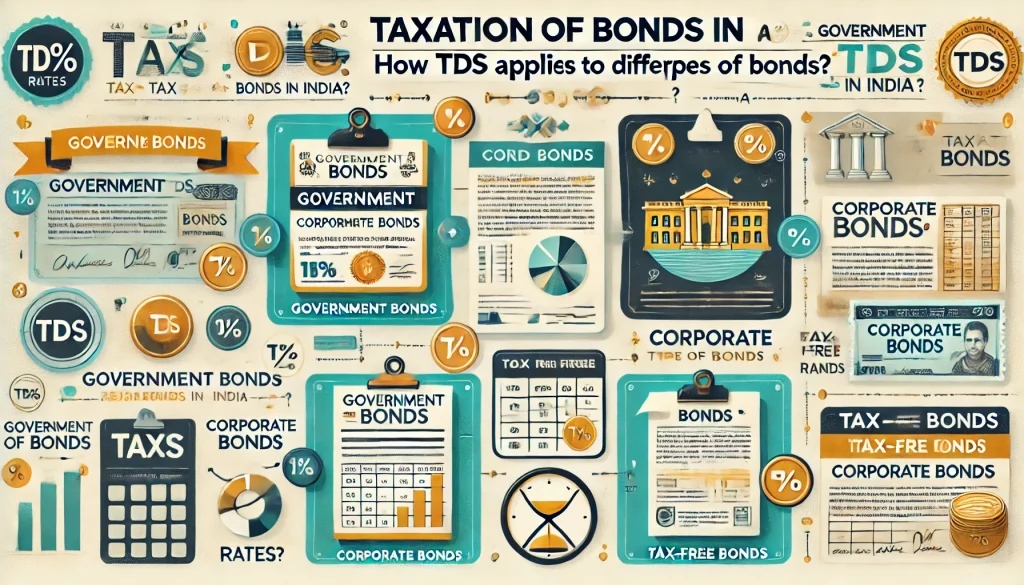
Opting for a floating-rate bond might be a perfect choice for you if you want to invest in a bond with a variable interest rate. These bond’s interest rates vary, depending on the benchmark set. In this guide, we will learn about floating-rate bonds, how these bonds work, advantages, disadvantages and more.
What is a floating interest Bond?
A floating-rate bond is a type of debt instrument that does not come with a fixed interest rate. They are also known as floaters or adjustable-rate bonds. Usually, entities like the government, financial institutions, or companies issue these bonds with a maturity period of two to five years.
With floating interest rate bonds, you can expect your interest to be paid either quarterly, every six months, or once a year. For example, in the case of RBI floating bonds, they pay interest twice a year, in January and July.
How Do Floating-rate Bonds Work?
A floating-rate bond works differently compared to regular bonds. For regular bonds whenever the interest rate increases, its bond price falls. However, floating-rate bonds have coupons that adjust with the current market interest rates. So, when interest rates increase, the coupon rates on these bonds rise, without affecting the bond prices. On the other hand, if interest rates decrease, the coupon rates on these bonds will go down, reducing the returns for investors.
Therefore, it is advised to buy these bonds when interest rates are low and are expected to rise in the future. However, it is important to note that you may not know the exact amount you will receive when the bond matures.
Types of floating-rate Bonds
The floating-rate bonds are classified into two types, which are mentioned below:
1. Callable Floating-rate Bonds
In a callable floating-rate bond, issuers can repay the bondholder the full principal amount and call back the bond before its maturity. It means the issuing agency can stop paying interest to the bondholder after returning the initial principal amount. These bonds protect issuers against fluctuating interest rates and allow them to retire the bond early.
2. Non-Callable Floating-rate Bonds
Non-callable floating-rate bond does not offer the issuer an option to call back the bond before maturity. With these bonds, they have to pay the interest rate based on the underlying benchmark, even if it leads to financial losses.
Advantages of Investing in a Floating-rate Bond
The following points highlight the advantages of investing in a floating-rate bond:
- Higher Returns: These bonds can provide more substantial interest rates than other fixed-income investment options. When market interest rates rise, they offer increased returns to you. In simple terms, they can be lucrative investments when market interest rates are going up.
- Stability: Floating-rate bonds are less prone to price fluctuations because their interest payments move in line with market interest rates. This makes them a safer choice compared to the stock market, which can be quite unpredictable.
- Diversification: Investing in a floating-rate bond allows you to spread your investments across different types of assets, especially when interest rates are low and expected to rise. It enables you to select funds with terms that align with your financial goals and helps in creating a better financial plan.
- Safety: When the government issues a floating-rate bond, it becomes a secure investment with dependable interest payments. These bonds are tied to the repo rate and carry no credit risk. Furthermore, government-issued bonds have a meagre chance of defaulting on interest payments.
Disadvantages of Investing in a Floating-rate Bond
The following points highlight the disadvantages of investing in a floating-rate bond:
- Lower Yields: At times, a floating-rate bond may offer you yields less than fixed-rate bonds because their returns are tied to benchmark rates. If benchmark rates drop, these bonds will provide lower yields to you.
- Interest Rate Risk: It cannot be assured that a bond’s interest rate will rise to the same extent as market rates in a rising interest rate environment. Consequently, you may face interest rate risk, meaning the floating interest bonds may not perform as well as the bonds linked with the market.
- Credit Risk: Credit risk occurs when the borrower/issuer is unable to repay the principal and interest owed. As a result, you may experience losses in your investments. To mitigate this risk, you can choose high-rated bonds or opt for government-issued bonds with no default risk.
- Call Risk: In the case of investments in a callable floating-rate bond, you may encounter the risk of the issuer deciding to call back the bond. While you will receive your initial investment back, you will miss out on future interest payments.
Interest Rates on Floating-rate Bonds
Suppose, in 2023, the RBI introduced a floating-rate bond. With this bond, you will receive interest payments periodically, in every six months. However, it is important to note that the RBI will also reset the interest rate every six months. The benchmark for this bond is set at 35 points higher than the prevailing NSC interest rate and these bonds have a maturity period of seven years from the date of issuance.
Given that the current NSC interest rate is 7.7%, the interest rate for the RBI’s floating-rate bond ends up being 8.05% (7.7 + 0.35 = 8.05). Any changes in the NSC rate directly affect the interest rate of these bonds, and this adjustment occurs every six months.
How to Buy a Floating-rate Bond?
In India, the government, companies, and financial institutions issue floating-rate bonds. You can invest in these bonds through the primary market or the secondary market. Here are the different ways you can follow to invest in these bonds:
Through Government
Follow the below steps to buy a government-issued floating-rate bond:
- Step 1: Register on the RBI Retail Direct platform or NSE GoBid platform with your KYC details.
- Step 2: Choose the bond available for subscription.
- Step 3: Pay online from your bank account linked to your Demat account.
Your bonds will be deposited in your Demat account or will be accessible on the RBI Direct platform.
Additionally, the government appoints official distributors and designated branches of banks and post offices from where you can buy these bonds. For this, you need to fill out an application form and provide the required documents. After processing your request, you will receive the bond certificate.
Through Corporations or Institutions
To purchase corporate bonds, you can do so through a brokerage firm or a broker in the primary market. Some of these bonds are also available for trading over the counter. You have the option to buy these bonds through the broker’s online platform. There are various online platforms from where you can access bonds, including Zerodha, GoldenPI, BondsIndia, and more. Additionally, you can buy these bonds in the secondary market through the stock exchanges.
If you believe that market interest rates may rise soon, investing in floating-rate bonds can be a good way to earn higher interest. However, it is important to note that these bonds also carry some risks. Therefore, it is advisable to consult with a financial advisor before investing in them.
FAQs
A floating-rate bond is usually of shorter duration because it undergoes periodic interest rate adjustments. Floating-rate bonds come with terms that last for two to five years.
The minimum amount required for investing in a floating-rate bond is ₹1,000, and there is no maximum limit.
Yes, you can jointly hold floating-rate bonds and also nominate someone to avail the benefits of such an investment.
Yes, the interest you earn from floating-rate bonds is subject to taxes based on the prevailing tax slab rate applicable to you.
Individuals residing in India and Hindu Undivided Families (HUFs) can invest in a floating-rate bond.


